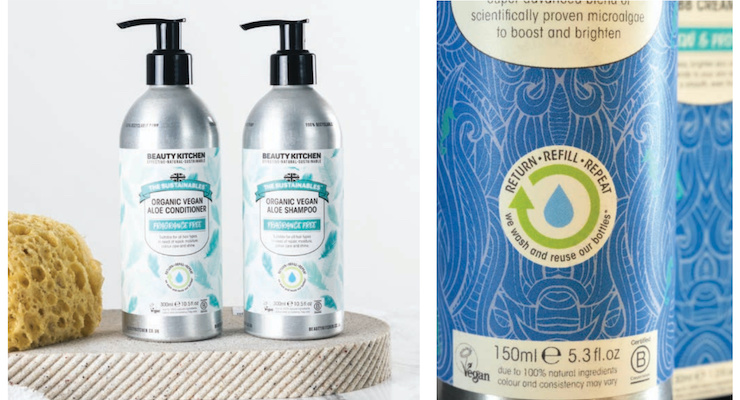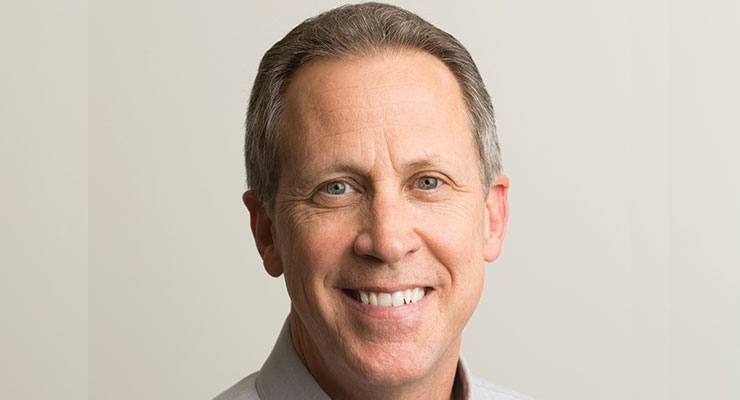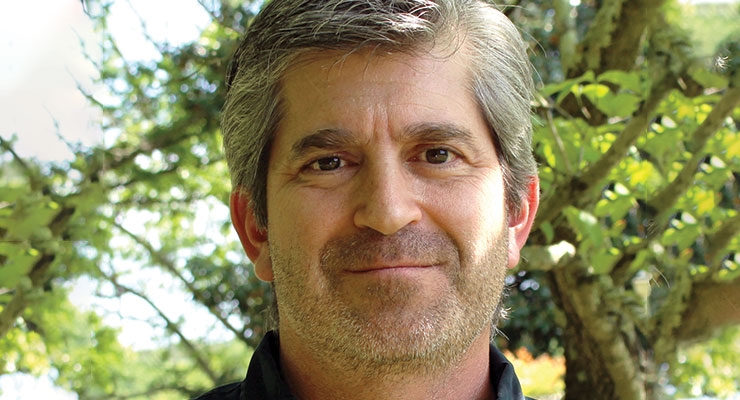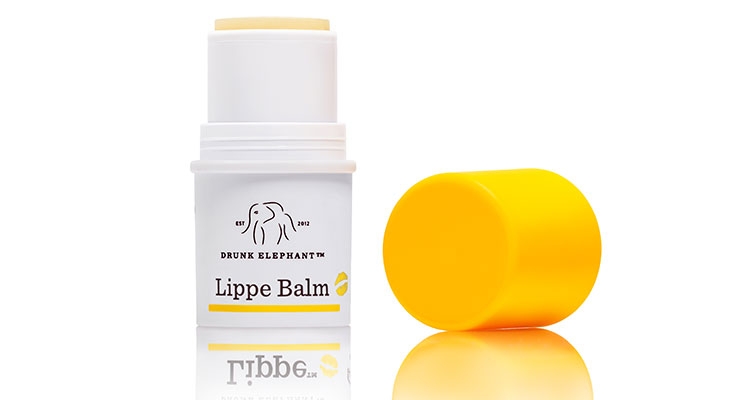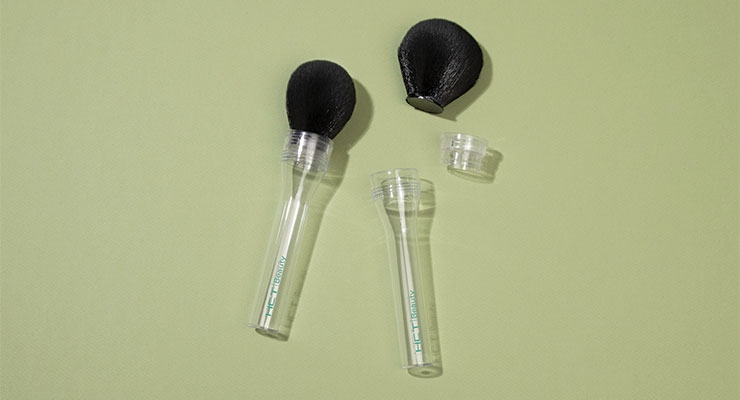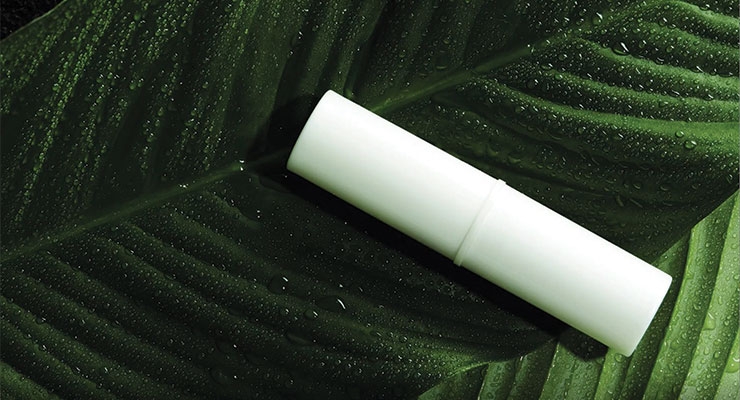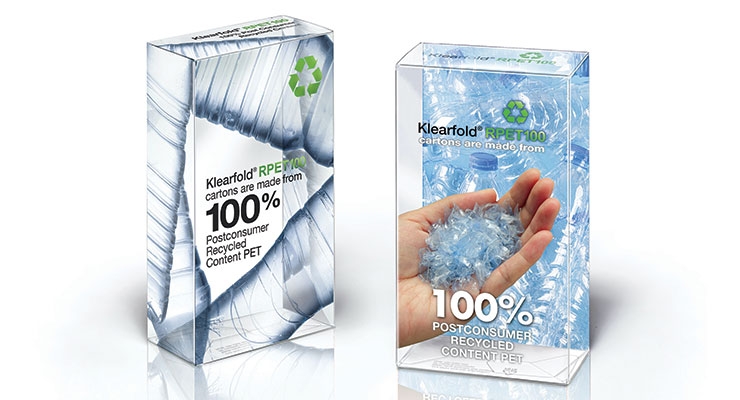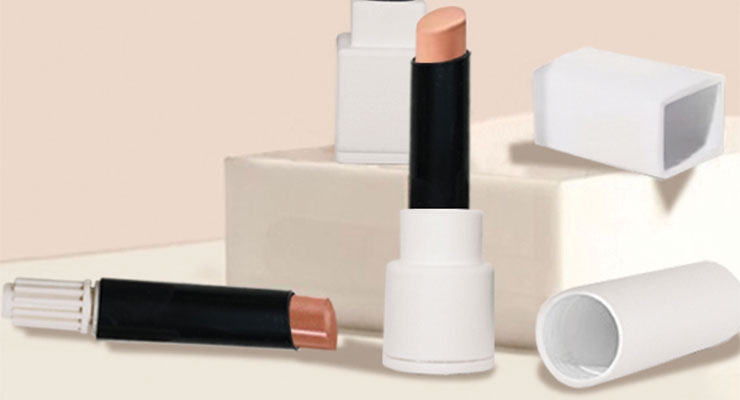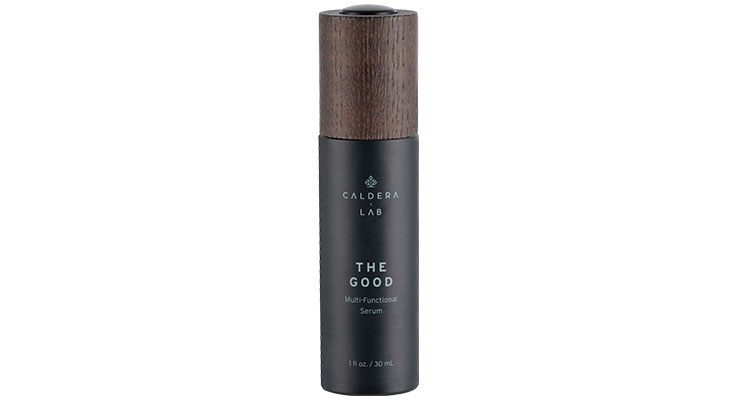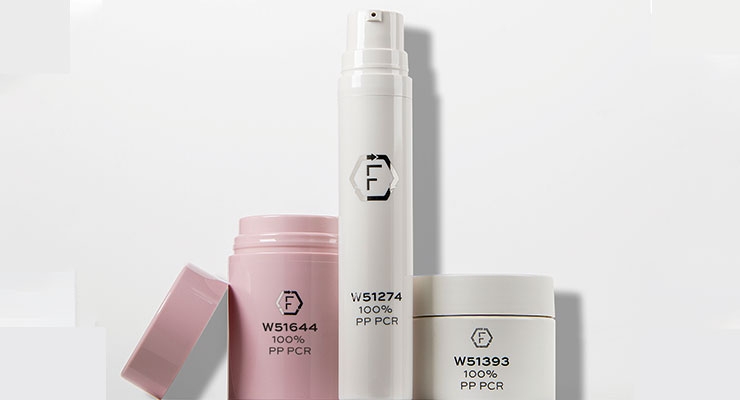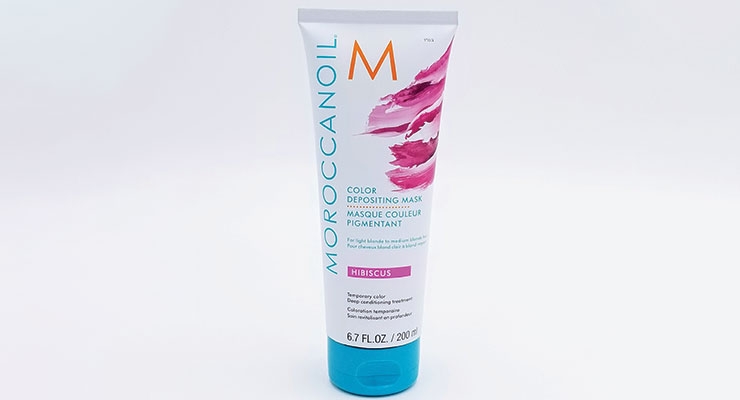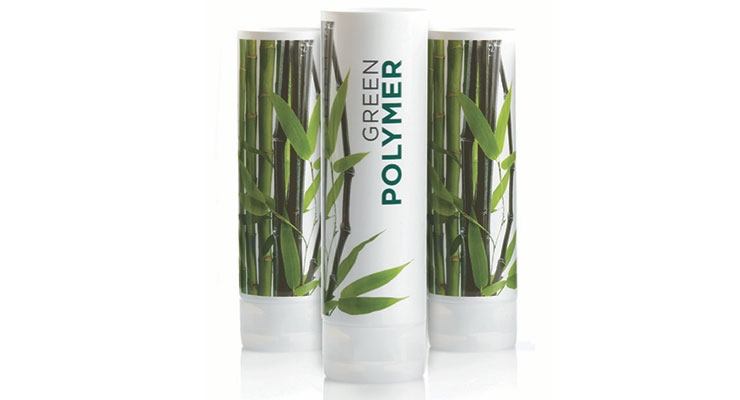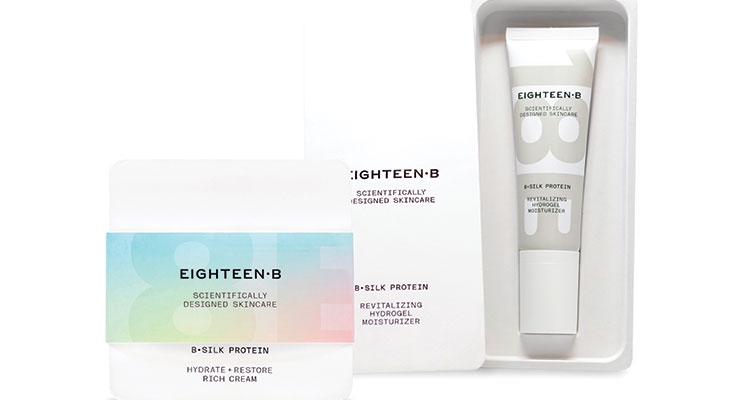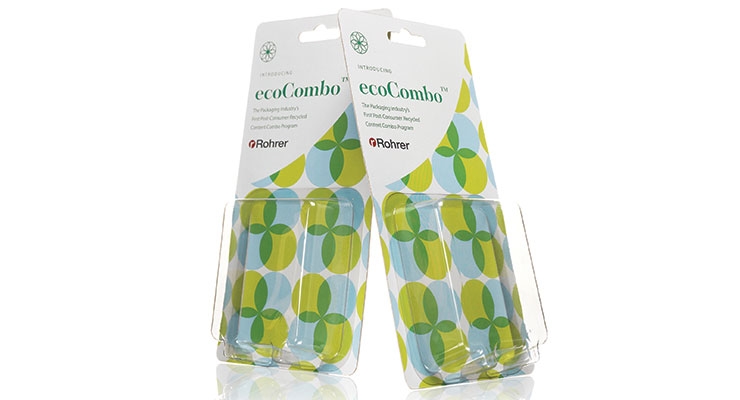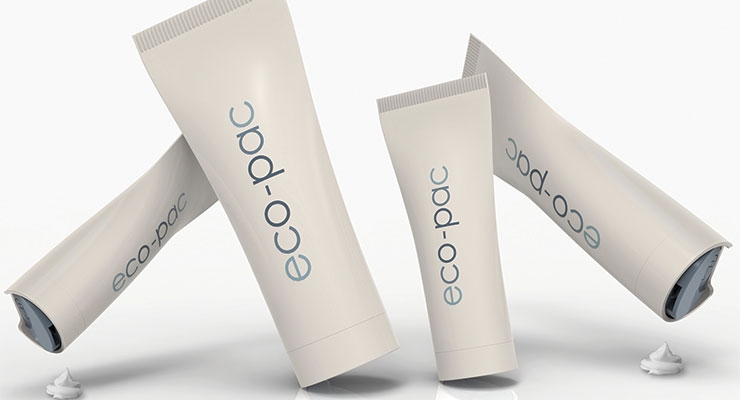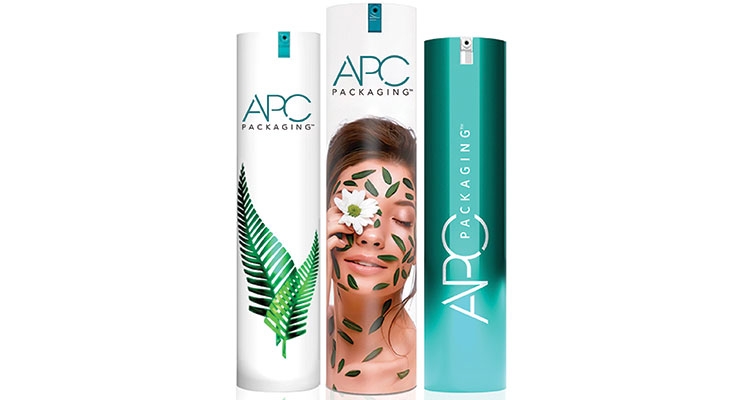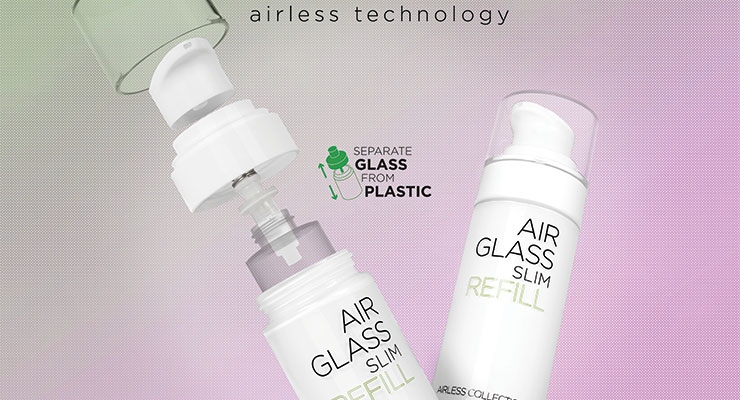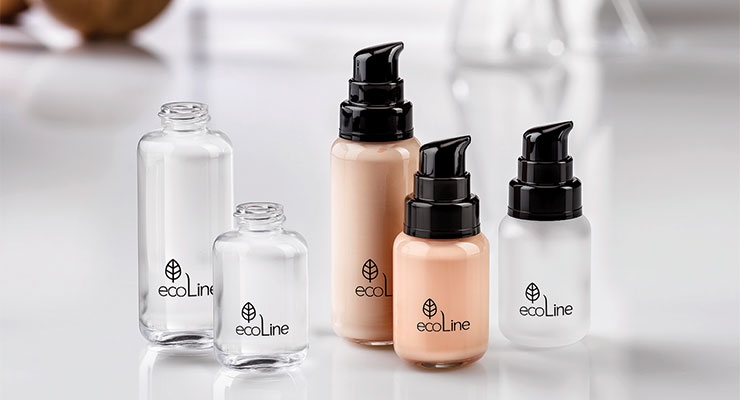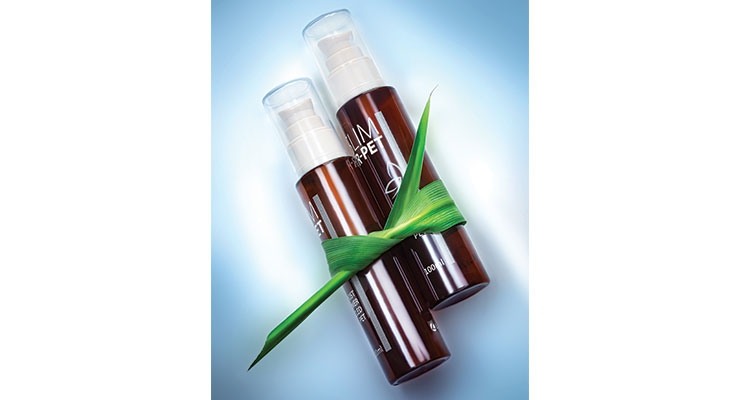Jamie Matusow, Editor-in-Chief05.01.20
Sustainability in both packaging and corporate practices continues as one of the key topics in the beauty industry, as well as many other sectors, driven primarily by environmental concerns from consumers and governments—especially as 2025 goals set over the past few years hover ever closer.
Announcements from retailers, manufacturers, brands and industry in 2020 show that a number of companies are expanding their efforts to protect the planet. In March, for example, Giles Hurley CEO of the Aldi grocery chain, told suppliers looking to sell to Aldi that products must be packaged in 100% recyclable, compostable or reusable material by 2025. Hurley added that the move to sustainability is “non-negotiable,” and that buying decisions moving forward “will be based on our supply partners’ ability to lead and adapt in this area.”
Earlier this year, Delta Air Lines announced that it would commit $1 billion over the next decade to reduce its impact on the environment, in an effort to become the first carbon-neutral airline, which includes using sustainable fuels. Amazon’s Jeff Bezos also announced a plan to go carbon-neutral—by 2040…
In its 29th sustainability report, Henkel, which ranked No. 13 on Beauty Packaging’s list of Top 20 Global Beauty Companies, announced ambitious plans for sustainable packaging and climate protection. New packaging targets for 2025 include avoiding plastic waste, and becoming climate-positive by 2040.
Henkel is aiming to reduce the carbon footprint of its production by 65% by 2025. The company is looking to have 100% recyclable or reusable packaging, cut fossil fuels by 50%, and be zero waste. Carsten Knobel, CEO of Henkel, said, “Sustainability is firmly embedded in our new strategic framework, as one of the drivers of competitive edge.”
In light of the difficulties sometimes involved in securing quantities of quality sustainable materials, L’Oréal, No. 1 on Beauty Packaging’s list of Top 20 Global Beauty Companies, announced a multi-year agreement with Loop Industries to purchase PET resin made of 100% recycled materials for its packaging needs for the next several years. Loop says that its low-energy technology depolymerizes waste PET plastic and polyester fiber and turns it into virgin-quality PET resin.
In yet another announcement, P&G, which ranked No. 2 on Beauty Packaging’s list of Top 20 Global Beauty Companies, made a further commitment to the sustainability of their packaging, signing a five-year contract to purchase recycled plastic from a supplier in the UK.
A Rising Interest
Sustainable Packaging far surpassed being a trend in the beauty industry years ago, but while many brands now make sustainability claims, they remain in the minority. Eco-responsible secondary packaging claims override primary packaging by far—but innovative suppliers are ramping things up, introducing new materials and formats—and focusing sharply on the 3 R’s (Reduce, Reuse, Recycle).
David Luttenberger, global packaging director, Mintel, says there has been an increasing number of beauty brands trying to get an eco-message across via their packaging, but says some of these claims may be somewhat misleading, focusing for the most part on a product’s secondary packaging.
According to Luttenberger, during the period January 2015 to December 2019, Mintel’s Global New Products Database recorded an 89% increase in on-pack claims related to environmentally friendly packaging among beauty and personal care (BPC) product introductions in North America. “However,” says Luttenberger, “that data point needs context, and that context being only slightly more than one out of every ten introductions in 2019 included that claim.”
Luttenberger further qualifies the data, saying, “Additionally, many of these claims are made on, and about, the secondary package, which is most often paperboard. One also needs to consider that BPC packaging is dominated by plastic. During the period January 2015 to December 2019, 64% of North American BPC launches used plastic as a primary packaging material. Being a bit more specific about eco claims, the more-simple claim of ‘recyclable’ has increased 125% during the same period. But here again, that claim most often appears on and refers to the secondary, or master pack. That growth has also come from a very small base, meaning that 125% reads better than what the actual total number of introductions suggests.”
While ‘recyclable’ remains perhaps the most popular claim when it comes to packaging (but remains very dependent on individual community facilities and capabilities), refillable and reusable have entered more into the mainstream possibilities as of late.
Jay Bolus, president of MBDC, a firm co-founded in 1995 by architect William McDonough, has worked alongside companies on product optimization, and Cradle to Cradle Certified development (a sustainable business model which re-circulates materials so nothing is wasted).
He has been the lead Cradle to Cradle assessor for L’Oréal and other beauty companies. He tells Beauty Packaging: “We are seeing beauty brands increasingly embracing the challenge of going beyond the concept of waste in their packaging—incorporating the good intentions of the 3 R’s. Many are also recognizing that what the package is made of is even more important to ensure we are not reusing or recycling toxic materials but instead designing packaging that is first safe, then circular.”
As an example, Bolus cites UK-based brand Beauty Kitchen which engaged MBDC for Cradle to Cradle Certified assessment for their products, which not only come in reusable packaging, but also have an “organized system of recovery.”
When it comes to advising a brand looking to make an eco-impact with their packaging, Bolus says: “The first step is to make sure packaging is safe and healthy, because when we circulate harmful materials we’re worse. This is what we call retox. In order for the Circular Economy to be a good system, we need to circulate goods—materials that have been optimized for human and environmental health. Then, the qualified packaging can be designed to be reusable, recyclable, compostable and recoverable.”
Not One Perfect Solution
With so many factors involved in choosing the “right” packaging—from sensitive formulas that require airtight containers, to luxe perfumes in premium bottles, speed-to-market considerations to cost efficiencies—the assembly of a fully sustainable pack is not an easy one. Many brands are finding that a step-by-step approach works best.
At MakeUp in LosAngeles, in February, Jill Tomandl, VP product development and innovation, Smashbox Cosmetics, The Estée Lauder Companies, spoke with Beauty Packaging about the many sustainable cosmetic packaging options presented on the show floor, and the dilemmas involved. She said, “Brands are trying to figure out how they want to approach sustainability.” In this regard, she said, “I like to say that we should be as sustainable as possible as soon as possible.”
Suppliers Speak
Most suppliers in the beauty industry agree that Sustainability is currently the hottest topic—in large part driven by consumers—and brands increasingly are eager to follow suit.
Gary Myer, AVP, global packaging engineer, WWP, says “Sustainability is the first word out of customers’ mouths these days. It’s the main topic at every client meeting and is being driven by end users putting pressure on brands to do their part and responsibly reduce their overall footprint.” But, he adds: “There is not one true perfect solution.”
Most important, says Myer, “is to do something.” He explains that many brands are paralyzed by research and analysis. “Take a step in a more sustainable direction,” he advises. “Even if you change course, you will have started the process.” He adds: “Also, be open-minded to solutions, watch out for one-size-fits-all corporate sustainability mandates that might pigeon hole your choices.”
Others advise powering ahead. Brandon Frank, president of Pacific Packaging Components says sustainability “is the number one request we are seeing in the beauty industry and it is not going to end. Brands are responding to a growing demand for sustainable products and packaging—and my advice for all beauty brands is to jump in with both feet.”
Pacific Packaging recently built the packaging for Drunk Elephant’s Lippe Balm, in order for it to be 100% recyclable. Frank says: “We were able to re-engineer the internal components so the entire unit would be recyclable by using only Polypropylene (PP) which has the No. 5 recycle code.”
Tiffany Masterson, founder of Drunk Elephant, says, “Recyclable packaging has been a goal that I’ve had for the brand for a long time. I approach Drunk Elephant as a consumer, and we do our best to make the right choices across the board and be as sustainable as possible in our formulas, ingredients, and packaging. We balance and evaluate the consequences of every choice we make at every stage.
Everyone on our team is committed to doing better and helping the planet. It’s an important—and exciting—time.”
Brands Are Getting More Serious
At JSN, Sean Kavanaugh, says more steps are being taken toward sustainable packaging. “It feels like companies were talking about sustainability but not doing anything,” he says. “Now, we are seeing more companies willing and wanting to get serious about sustainability.”
To help ease sustainable packaging decision-making for brands, HCT Group’s project engineer, Thomas Chun, says, “There are many different ways to get an eco-message across via the packaging, which is why we broke our eco program up into categories of packaging that help our customers achieve sustainability using different approaches.” Chun explains that the elements they see driving this new norm are:
“More and more brands have gotten very serious about sustainable packaging; Brands have made corporate commitments to sustainability goals and the trend seems to be driven by end users becoming more conscious of the environmental impact their purchases make; and in many cases, brands are being exposed by consumers for over packaging, or unnecessary packaging.”
HCT Group simplifies the process for brands by offering its EMA (Eco Modern Approach) line, which focuses on four categories: designed for recycling, post-consumer recycled materials, refillables and bio-based materials.
One of HCT’s recent launches to their sustainability program is their ECO Brush, made from 100% PET or rPET. This brush allows the user to refill the brush or change the brush head easily, and is made without the use of a ferrule or glue. This patented system makes it easy to separate and recycle the handle after use. They also offer their refillable pump and jar, which Chun says is a great, more sustainable option for skincare.
At Baralan Group, Maurizio Ficcadenti, global R&D manager, says Baralan’s vision is “to identify sustainable materials that respect the conditions of recyclability or biodegradability, and to use glass and biopolymers that are derived from renewable resources and natural materials not related to the food chain.”
He says all of Baralan’s products respect the 3 R’s. “For us, says Ficcadenti, “this involves the use of a minimal number of components and amount of material, and the design of packaging which is reusable/refillable/recyclable and simple to disassemble.” He adds, “For Baralan, it is important to always guarantee the functionality of the product, but at the same time offer increasingly eco-friendly solutions for the environmentally conscious consumer.”
ECOBARALAN is Baralan’s line of 100% natural bioplastic items, made with a combination of natural fibers and waste that combines the processing capabilities of thermoplastic materials with renewable resources and natural materials. Baralan is able to use this biopolymer to produce certain standard items with injection molding technology. It can be used with existing Baralan molds and has flexible applicability in manufacturing. The supplier uses it to produce standard injection molded sticks, jars and compacts, overcaps/overpumps and screw caps at their manufacturing plant, Labor Plast.
As mentioned, cartonboard is experiencing a rise in awareness of recycling. At BillerudKorsnäs, Inger Henke, business director, tells Beauty Packaging, “We believe that this trend is being driven by increasing savviness about and concern over the environment by the consumers.” In addition, she says, “E-commerce is heightening our awareness about recycling, since it is increasing this activity at our homes. Information about global warming and plastic in the oceans is being disseminated more frequently and accurately.”
There’s also been more of an effort to achieve corporate goals.
Patrick McGee, vice president, marketing, at HLP Klearfold, says, “To communicate their eco-messages to consumers and the industry alike, many beauty marketers have published 2025 (or later) sustainability goals, which often include the use of 100% postconsumer recycled (PCR) content in their plastic packaging.”
To meet these goals, McGee says HLP Klearfold’s RPET100 has been third-party certified as made from 100% PCR content polyethylene terephthalate (PET), and cartons made from RPET100 can be labeled as such. According to McGee, the use of 100% PCR plastics eliminates the consumption of virgin, non-renewable resins. “Our producing 100% PCR packaging provides a use for waste plastics that would otherwise be landfilled, and supports the efforts to increase the infrastructure and collection of PET for recycling.”
A Response to Consumer Demand
As consumers become increasingly aware of the effects their makeup packaging has on the environment, ICS says they continue to develop more sustainable options for packaging, with rising requests and feedback from brands.
Eleanor Bunting, marketing manager, says, “Our development of PCR materials and recyclable mono-materials, such as packaging using only PP and PET has caused an increased demand from brands.” She says that mono-materials can be easily classified for recycling, creating a longer life cycle of the product.
“The notion of recycling and reusing has also contributed to increased popularity of PCR materials and although the idea of refillable packaging is by no means new,” says Bunting, “at ICS we have also seen a recent spike in demand for a number of refillable packaging options. The simple concept of refilling and reusing packs is a great way to replace single-use plastic and helps reduce waste on our planet.”
However, she says “Current refillable packaging has to do even more than that. In order for consumers to consistently reuse their refill it has got to be both aesthetically pleasing and functionally effortless to use. Refillable packs can also be created with sustainable materials such as our ICS exclusive biodegradable packaging, further adding to their value.”
ICS recently developed an exclusive Biodegradable Refillable Lipstick. Sue Nichols, CEO, describes it as “sleek, innovative, and of course, sustainable.” The refillable lipstick features a biodegradable cap and base. The lipstick inner is refillable; simply remove the lipstick mechanism from the base once the lipstick is ready to be replaced, then insert the cartridge refill back into the biodegradable outer pack. The cap and base are 100% biodegradable, 100% compostable and 100% made from natural plant-derived material sustainably grown for industry. Nichols adds: “Our ICS Biodegradable Refillable Lipstick is perfect for clean beauty gurus as it has not one, but two environmentally responsible attributes with its zero-waste outer and refillable inner.”
Virospack is known for its precision dose droppers and application along with high quality and customization. Packs can be easily separated for consumer convenience. Rosa Porras, marketing communications manager, explains, “A pack with components that are easy to separate is really important for brands, because all materials together are waste, and separated they become a resource.” In this sense, says Porras, a full pack from Virospack is always composed of a glass bottle (molded or tubular). She adds: “Glass is perfect for containing delicate formulas like cosmetics. Our glass is high-quality, highly transparent and highly compatible with formulas.”
Caldera + Lab, a men’s skincare brand made in the USA, worked with Virospack on a full pack manufactured and decorated in Virospack facilities according to the brand´s specifications. The package is comprised of a molded, painted black glass bottle with gray screen printing. A push button dropper with a wood shell cap and a black injected button add a masculine look and an eco-style.
Of course, function remains critical, regardless of materials used.
Hana’s Eco pump design is a mono-material system which uses PP material. Renaud Baker, general manager, Hana Innovation America, Inc., tells Beauty Packaging. “The main focus of Hana’s recent innovations and innovative packaging investments and developments have predominantly revolved around two main pillars of sustainability: recyclability and refillability.
Jeff Lim, managing director, Hana Innovation Korea Inc., says the all-plastic Eco-pump can be recycled, while conventional pumps (with a metal spring) merely go into the trash.”
Re-usable and refillable package designs allow the end-consumer to reduce the amount of material and waste by replacing only a portion of the packaging instead of its entirety, according to Baker. He explains, “The creation of an all plastic pump (that performs as well—at times, better—than conventional, multi-material pumps) can be recycled. This recyclable pump system adds to our clients’ ability to meet their internal sustainability goals.”
Sustainable Packaging Follows the Clean Beauty Trend
FusionPKG’s Daniel Campbell, senior packaging engineer, tells Beauty Packaging they are working with “many of the top beauty brands to help achieve and exceed their sustainability commitments over the coming months and years, such as improved recyclability and using recycled materials.”
He adds: “Not only are these commitments important, but we have seen industry data that suggests that many new brands positioning themselves as eco-conscious and sustainable are having a very high success rate right now. The trend of seeking sustainability or launching with sustainability as a core message is coming from many avenues, starting with individual consumers being more eco-conscious, along with brands wanting to be more forward thinking.”
Campbell says they work with brands to find ways to balance performance for their products, especially those within the “clean beauty” movement toward less preservatives and harmful substances, with their eco goals and commitments. “At FusionPKG,” says Campbell, “we are excited to have our line of elite quality airless packaging, which protects many of these clean formulas, while allowing for the consumer to recycle the package after its intended use.”
At Viva Packaging, Melanie Gaudun, business development manager agrees. “Along with a clean beauty trend in formulation is a cleaner beauty trend in packaging. We are seeing growing interest for more sustainable packaging options and more clients are acting on it. Many companies have clear targets on their websites to improve the recyclability and carbon footprints of their packaging within the next few years.” She adds: “With a lot of media focus on polluted oceans and overflowing landfills, consumers are interested in these options and feel good about supporting products with more sustainable options.”
Viva developed the tube for Moroccanoil Color Depositing Mask with high content PP PCR in the sleeve and shoulders. The tube, cap and label are all PP. The PCR is uncolored gray, and is totally covered by the in-mold label and cap. The label itself has a barrier substrate, yet is decorated with eye-catching color to match the product results on a white background.
Packaging as An Eco-Billboard
Many brands are using packaging as an effective conduit to get out their immediate overall sustainability message.
When doing so, Ulibarri from JSN offers this advice: “When using eco materials, be sure to claim it on the packaging artwork. Also make a statement in regard to the recycling of the package.”
As to where it’s made. JSN’s Kavanaugh suggests: “Number one—source USA.” He adds, “Our environmental standards and rules are light years ahead of Asia. And Number two: Be willing to pay more—you are buying an organic apple, not a standard one from your grocer.”
JSN develops sugarcane sustainable tubes, as well as PCR caps and tubes. Kavanaugh says, “We developed a line for a customer that was using sugarcane as an ingredient in their product. They loved the idea of offering a sugarcane-based product with a sugarcane tube. We also made a PCR cap for them so they can boast a truly sustainable package.”
There has been a dramatic increase in packaging inquiries for both primary and secondary packaging in the cosmetic industry, according to Golden Arrow’s Jason Sullivan, associate vice president of sales and marketing. He says this is especially true for the Fortune 500 cosmetic brands that have set strong sustainability goals for the next five years. “Our sustainable molded fiber material is something they have expressed interest in adapting to their product lines,” says Sullivan.
Golden Arrow provided a full molded fiber container in white for the Eighteen B brand’s secondary packaging. Sullivan says, “Through customized tooling, their product sits nicely in a tray with a black foil stamp of their logo/product name. To finish it off, we offered a small printed outer sleeve that indicates all the main ingredients and marketing details to securely wrap the package while also showcasing the molded fiber material. The end result is clean packaging that stands out in retail spaces.”
The brand required Golden Arrow to show that the product was indeed recyclable and biodegradable, so the supplier provided related MSDS, certifications and videos to prove their claims.
Brand owners see “a deadline looming on climate change and think, ‘What are we doing? explains Sarah Carson, vice president of marketing at Rohrer. She says, “The pressure to make sustainable decisions comes from their consumers and their employees. People want to connect with brands that they are part of the solution.”
Carson says with the upcoming launch of Rohrer’s ecoCombo, which she describes as “the packaging industry’s first post-consumer recycled materials combo program,” they have helped their partners promote this sustainable packaging choice with consumers by offering a sustainable packaging seal for them to use in the program. Rohrer also partnered with One Tree Planted to plant a tree with every ecoCombo order.
“Most beauty brands want to communicate an eco-message to their customers,” says Federico Prestini, managing director, Premi Beauty Industries. He explains, “The driving trend is the idea that the customer wants to know the message behind the product—and now it is becoming more important than the product itself.” He adds, “The customer doesn’t choose a beauty product, but the philosophy/mission behind it. Our strength is packaging design and we propose eco-packaging with a design that follows the latest beauty trends.”
Robert Bulla, director of engineering & packaging, APC Packaging, credits the “younger generation” for the rising demand for sustainable packaging, and supports the idea that sustainability is not a trend. He says, “It is a reality that demands to be recognized not just because the younger generation is more vocal, but it is a reality that will hit us all like a slap in the face even if we choose to ignore it for the moment.
I would say the younger generation is driving a more vocal trend away from single-use packaging and recyclable materials.”
Bulla says APC is asked almost daily if they have sustainable options available that meet each brand’s view of sustainability. He says, “I believe the trend has always been there and sought after by some brands more than others over the years. Skincare and color cosmetic brands have always had an ear trained on their customers more so than other industries due to the very nature of the products they sell. I believe many suppliers are only now realizing it’s not a trend in the business, but brands have become more vocal to their suppliers on the subject.”
First Steps Toward Making an Eco-Impact
With so many criteria and packaging options available—complicated by formulation sensitivities, dispensing functionality and, of course, eye-catching attractiveness, what are some good starting points for brands eager to incorporate more sustainable packaging?
Mintel’s Luttenberger suggests that brands that can’t eliminate plastic from their packaging, or that use mixed material structures, need to be upfront with consumers about how they are addressing the plastic pollution, recyclability, and greater sustainability issues. He says, “Empathy is a great strategy. Ensure consumers know that your brand understands their concerns for the environment, and that you are working toward more environmentally responsible solutions, but that this responsibility is not an all-or-nothing proposition. It will take time, and progress will most likely be made incrementally.”
HCT Group’s Chun advises brands to go step by step, saying, “It is hard to check off every box for sustainability to make everything refillable, recyclable, and made of recycled materials all at once. He says, “Small changes are okay, like adding a percentage of PCR. As more brands continue to launch with that, the market will follow and continue to make sustainable packaging the standard.”
Depending on the degree of sustainability brands aspire to, they may have to make certain compromises. Chun says HCT is looking into ways to minimize the aesthetic changes a brand will need in order to make more sustainable packaging, “but the reality of most recycled material will inherently have a bit more cosmetic defects than their virgin counterparts. In addition, recyclable packages will need to avoid certain types of over sprays, metallization and decorations to be recyclable.”
“Brands should keep in mind that the shift from traditional plastics to a sustainable solution is no small jump, but it is certainly not impossible,” according to Golden Arrow’s Sullivan. He recommends that customers keep an open mind when evaluating all the possible materials that will suit their packaging needs within budget, while keeping a great out-of-box experience for consumers.
WWP offers a range of sustainable options, and Myer says, “We will spell out the pros and cons of each—and there are pros and cons of each. We want to see true change and will not simply give ‘green washing’ advice.” He says they push light weighting as a real reduction option, and offer components and tubes in PCR, bio-sourced PE, paper, aluminum and glass. In addition, they have a proprietary non-plastic option, called PFP (plant fiber polymer) for rigid components, that is certified organic and uses no fossil fuels. He says refillable packaging is also a good solution, and WWP offers many packaging lines that allow for this.
Inspired by the need for a more planet-friendly tube option, WWP’s Eco-Pac tube family has been engineered as a light weighted bio-PE package (sleeve, head and disk top) and is approximately 35% lighter than conventional tubes with dispensing closures. Myer says the mono-material construction, absence of fossil fuel-sourced materials and its single-stream recyclability, provide a truly sustainable package alternative.
At Rohrer, Carson notes: “Often, people believe that eliminating plastic is the only true way to ‘go green.’ While paperboard packaging is a great choice, using recycled plastic materials makes an enormous impact. Post-consumer recycling removes trash from the waste stream and supports our communities’ recycling programs. The best solutions come from incorporating thoughtful design and responsibly sourced materials.”
Lowering the Carbon Footprint
Viva’s Gaudun suggests that brands choose packaging with a lower carbon footprint. Viva injection-molds tubes in polypropylene (PP), and also makes the caps and in-mold labels in-house, in polypropylene.
She explains that because of the properties of polypropylene, Viva’s vertical integration, and the Ontario hydro grid, compared to laminate and extruded tubes—with and without recycled content—tubes manufactured by Viva show lower environmental impacts in all of the most relevant impact categories: global warming, fine particulate matter formation, and human non-carcinogenic toxicity.
Gaudun says tubes and caps made with mixed resins cannot be recycled. Mono-material tube, cap and label are recommended for recyclability. Another option is to add post-consumer recycled material (PCR) to plastic packaging. Viva offers up to 100% PCR in tubes, caps, jars and deodorant sticks. The in-mold labels in the PP tubes and sticks cover any color limitations of the PCR. PP PCR is also recyclable. And of course, light weighting is another option—using less plastic, says Gaudin.
Lowering the carbon footprint is an essential tenet at BillerudKorsnäs, where Heinke suggests that a brand should focus more on the CO2 related to packaging, and not just “the old fallback position of recycled content.” She says, “Recycled content in luxury packaging compromises the strength and aesthetic of the package, and has a higher cost and carbon footprint than virgin fiber. Virgin fiber boards and papers are absolutely necessary in the mix to keep recycling viable.” According to Heinke, fibers can only be recycled six times before disappearing.
While knowledgeable suppliers play a large role in educating brands, brand executives have also become very well-versed regarding sustainable packaging and practices.
At Neenah, for instance, Kristen Duncan, Neenah’s sustainability manager, says: “We are beginning to have more in-depth conversations with customers around responsible fiber sourcing. We have all kinds of customers who are looking for alternative fibers, and we’re always looking for solutions to match their initiatives.” She says that some of the most recent additions of hemp-based products to Neenah’s Folding Board line and Neenah IMAGEMAX Signage to their wide format offering are great examples of successful customer partnerships resulting in new products for the marketplace.
“Our advice to brands desiring to make an eco-impact with their packaging,” says Duncan, “is to design with sustainability in mind. From the first concept, consider the environmental impact of all printing and finishing techniques. Choose packaging that not only accentuates the natural look and feel of products within, but supports a belief in naturalistic, holistic and sustainable choices. When it comes time to place an order, request custom sheet sizes to minimize waste.”
Advice Based on a Brand’s DNA
Different brands have different goals when it comes to sustainable packaging—and suppliers often advise solutions based on the individual brand’s DNA.
At APC Packaging, Bulla says, “First and foremost is understanding the brand’s DNA when it comes to sustainability. We will quickly ask specific questions to gauge the brand’s idea of sustainability and level of understanding. With the number of misconceptions on what is sustainable and the variety of what local governments will accept as recyclable materials, it can feel daunting. With that in mind, only then can we address any suggestions to a brand. Our first suggestion would surround material choices of the entire package. After that we will challenge a brand with refillables to extend the life of the package.”
As noted earlier, when it comes to refillables, ease of replacement can be critical to user acceptance
APC recently developed a new patent pending Airless Refillable System based on the needs of one of their client’s sustainability needs. The material choice was Polypropylene for almost every single component except the Polyethylene piston and a few parts in the pump engine. Up to 75% of the entire package weight can utilize Polypropylene PCR, and the life cycle of the package went from single use to up to five times longer.
Bulla says, “Customers will experience what they are used to seeing with an airless package, but also be able to utilize the intuitive button design on the bottom of the package which easily releases the entire inner bottle assemble so the customer can easily remove the expended inner bottle and easily screw a recharged bottle right back on. The first pump for priming locks the entire inner bottle back into position. Pricing is reflective of other double wall airless packages on the market.”
At Cosmopak, Syeira Simon, product development and formula innovation manager, suggests PCR as a great option “that can significantly reduce a brand’s carbon footprint.”
Baralan’s Ficcadenti suggests that customers use recyclable materials such as glass—or specific plastics that are recyclable using existing systems and technologies. He says it is important to clarify that materials can be either post-industrial recycled (PIR) and/or post-consumer recycled (PCR). “Therefore,” says Ficcadenti, “both the industry and the consumers need to be aware of the importance of recycling.” He adds, “We advise brands to have a unique strategic supplier that can minimize environmental impact through efficient logistics.”
At a time when brands are looking to tell compelling stories, packaging can play a persuasive role. This is why Premi’s Prestini suggests building a message, telling a story, with a green concept. He says, “It is important to communicate to the consumers the plus of the green pack and the importance of a circular economy.” He says recyclables and refillables play a role. With Premi’s Airglass Slim Refill, consumers can separate the glass from the plastic.
Howard Greenberg, VP of sales, Allstate Packaging, advises customers to look for a company with a good history of eco-friendliness that can help guide them toward the package they would like to have.
He says, “We have been recycling factory waste since our start over 50 years ago. All of our trim waste goes back to the chipboard mill to get recycled into new materials. We have also entered into an alliance with Staeger Packaging, a UK supplier of recycled transparent packaging. We will be their exclusive North American agent. This helps us offer a wider range of options to our customers.”
Staeger Packaging Group offers cartons, sleeves, tubes & vac forms made from food grade recycled PET; and old water bottles ground down, super cleaned and re-extruded to form new plastic, commonly known as RPET.
New Solutions
An organic additive called EcoPure offers a different approach to eco-friendly plastic packaging. It has recently been introduced to the cosmetics industry by Garrett Hewitt International.
According to Jason Clerke, president, Garrett Hewitt, when EcoPure is added to any type of plastic resin that is made into a product through extrusion, injection molding or blow molding, EcoPure makes the plastic’s biodegradation rate increase drastically when that plastic ends up in a landfill or a marine environment. Clerke says the big advantage this has over a lot of other plastic solutions, is that it does not change the color, clarity, compatibility, shelf life or decoration capabilities of the plastic package. It can also be added to PCR plastic.
But the biggest advantage, says Clerke, “is you do not need special tooling to use it, so you produce the packing the same way you normally would and simply add the EcoPure at 0.5% of the total volume of plastic.”
Clerke further explains: “We found out about EcoPure last year and discovered that no one in the cosmetic, skincare or fragrance industry was using this product or knew about it. Other industries had been using it, but the plastics world is so big, it hadn’t found its way to our industry. We immediately contacted the parent company, Bio-Tec Environmental, out of Albuquerque, NM, and have become the distributor to our industry. Already, it has been received incredibly well and companies are starting to make their plastic items with EcoPure.”
Shannon Payne vice president of sales, Garrett Hewitt, adds that EcoPure addresses the reality of recycling in the USA, where “it is estimated that we only recycle about 20% of the plastic we put into the recycling bins, so we need to make sure the plastic that does end up in landfills and marine environments, doesn’t take hundreds of years to biodegrade.”
Toxicologists at Heriot-Watt University in Edinburgh have revealed new packaging made from polylactic acid (PLA), which can be obtained from renewable resources like corn starch or sugar cane, and is compostable and biodegradable.
To improve the performance of this plastic, and to increase the shelf life of the cosmetic product, researchers added nano clays, which they say improve the barrier properties of the product, and a rosemary extract which acts as an antioxidant to protect the cosmetic product from degradation. The team says it believes the new bio-packaging has great potential in the cosmetics industry—and testing is underway.
What the Future Holds for Sustainable Packaging
While so much progress has been made in sustainable packaging and practices, a massive evolution will undoubtedly take time. Just how long?
Industry experts offer various views below.
See more in the Online Exclusive: What the Future Holds for Sustainable Packaging in Beauty
“The evolution of sustainable packaging is very exciting,” says HCT Group’s Chun. He says, there is a lot of news everyday regarding new more sustainable bio-materials, and new recycling processes that can create very high-quality PCR materials. “We expect ourselves, as well as other suppliers, to continue to innovate and create new solutions to meet the requirements of brands,” says Chun.
Mintel’s Luttenberger believes a complete changeover will take time. He says: “Consider the roles we have asked packaging to undertake during the past 120 years or longer—safety, preservation/efficacy, and distribution. We are now asking it to continue those roles, but to also be a good environmental player. Consider that the leap from the Wright Brothers’ first flight to Neil Armstrong standing on the moon was a decades-long process and an evolution of aerodynamics and propulsion.”
He adds: “We, as a consumer-packaged goods and packaging industry, must continue to research, develop, and commercialize the next-generation of packaging—environmentally responsible packaging—in a rinse, lather, repeat process. It will be evolutionary over time rather than revolutionary overnight.”
At Golden Arrow, Sullivan, says, “We think sustainable packaging is the future, and once the major brands have adapted to this significant practice on a massive scale it will become a mainstream practice that everyone will follow.”
Bolus, president of MBDC, predicts: “As the demand for environmentally responsible packaging advances, brands will strive to have a positive impact on the planet and meet the standards of Cradle to Cradle Design—achieving excellence and progress in material health, circularity, renewable energy, water stewardship, and social fairness. Good design allows us to not limit growth, but to grow in ways that replenish, restore and nourish the world.”
Governmental legislature may be key to moving sustainability ahead faster.
“The move or demand will stall eventually if we do not get our local and federal governments involved as well,” says APC Packaging’s Bulla. “This is a group effort and all parties from individuals to corporations and governments must all be working together to protect the resources we depend on every day.”
The availability of recycling facilities—and consumer acceptance of recycling—will also play major roles.
“Currently, only a modest percentage of plastic packaging is being collected for recycling,” says McGee, of HLP Klearfold. “Consumers are frustrated that often the plastic packages that they place in their curbside collection containers are not recycled at all. Specifying packaging that contains PCR, especially 100% PCR, drives the demand for these materials and therefore the efforts to collect these materials for recycling.”
WWP’s Myer sees progress, and is optimistic about the future. “We have seen the request for sustainability many times in the past, and I believe this push is here to stay,” he says. “Brands and customers are finally taking a serious look at how their products are packaged and what impact it is having on our surroundings. Customers are very aware they need to take a role in the packaging, not only by making responsible purchasing decisions, but by also taking a role in the proper refilling/recycling/disposal of their packages.”
A Joint Venture
Taking all this into account, a phrase we have heard repeatedly while immersed in the Coronavirus pandemic, comes to mind: “We are all in this together.”
Beauty Packaging polled a number of beauty industry suppliers and asked:
‘What do brands ask for most frequently as far as sustainable packaging?’
Here are some of their responses.
For a full account of replies, see the Online Exclusive at Beauty Packaging: Top Sustainable Packaging Requests from Brands
- Robert Bulla, director of engineering & packaging, APC Packaging: “First words typically are ‘Do you have PCR’ and ‘How much of it can I get into the package?’ The next question will be ‘Can we get it in glass, if plastic is not available, and lastly biopolymers.’
- Melanie Gaudun, business development manager, Viva: “PCR content as high as possible.”
- Thomas Chun, project engineer, HCT Group: “We see more brands asking for more refillables lately. By having a reusable element, typically something more luxe like glass or metal, brands are able to maintain their existing aesthetics, while making a sustainability statement by minimizing the amount of single-use packaging.”
- Rosa Porras, marketing communications manager, Virospack: “A pack with components that are easily separated.”
- Syeira Simon, product development and formula innovation manager, Cosmopak: “They ask for easily recyclable options such as glass and aluminum.”
What is the greatest challenge in choosing materials for environmentally responsible cosmetics packaging?
Beauty Packaging asked industry suppliers what they’re hearing as they engage in brand interactions.
See more in the Online Exclusive: How Beauty Industry Experts Advise Brands on the Challenges of ‘Going Sustainable’
Gary Myer, AVP, global packaging engineer, WWP: “There are pros and cons of each approach and material. These need to be considered and vetted on a case-by-case basis.”
Thomas Chun, project engineer, HCT Group: “The greatest complication is checking off all of the boxes. It is difficult to find a material that is made of recycled materials, is recyclable, has a minimal carbon footprint, is biodegradable or compostable, and does not require brands to change their aesthetic. There are so many options that have different pros and cons and it gets very confusing, especially for brands, as to what ‘sustainable’ means. HCT is trying to educate brands through what their options are, and help them develop their packaging in a way that aligns with their sustainability goals.”
John Ulibarri, senior account executive, JSN: “Mainly it’s a cost consideration. Companies want to be green but don’t always want to pay for it.”
Syeira Simon, product development and formula innovation manager, Cosmopak: “The greatest challenge is that recyclability is not ‘one size fits all;’ a packaging material that a consumer buys in one city might not be recyclable in the next.”
Federico Prestini, managing director, Premi: “The greatest challenge is to find a compromise between an eco-friendly pack and luxury products because eco-friendly packs are limited in some material and finishing choices.”
Robert Bulla, director of engineering & packaging, APC: “First is getting through the misconceptions. Everyone had been asking for glass until people started realizing all glass is not recyclable. Now PCR is the new buzzword, but at the rate of consumption of PCR as it stands right now, both glass and plastic will have issues with not only cost but supply. We have in plastics and glass a huge issue that has not been considered. Plastic is recycled at a rate of about 30% globally and glass is recycled at an even greater percentage. Only problem with plastics is that we are still not accounting for the other 70%. For glass, we aren’t accounting for the use of silica sand which is used for glass production at a greater rate than what the planet can replenish.”
Inger Henke, business director, BillerudKorsnäs: “Understanding the source of raw material components in packaging. When brands are purchasing secondary packaging, those sources are not always obvious or revealed. Knowing the source and environmental performance of the raw material suppliers is an important first step in sustainable sourcing strategies.”

